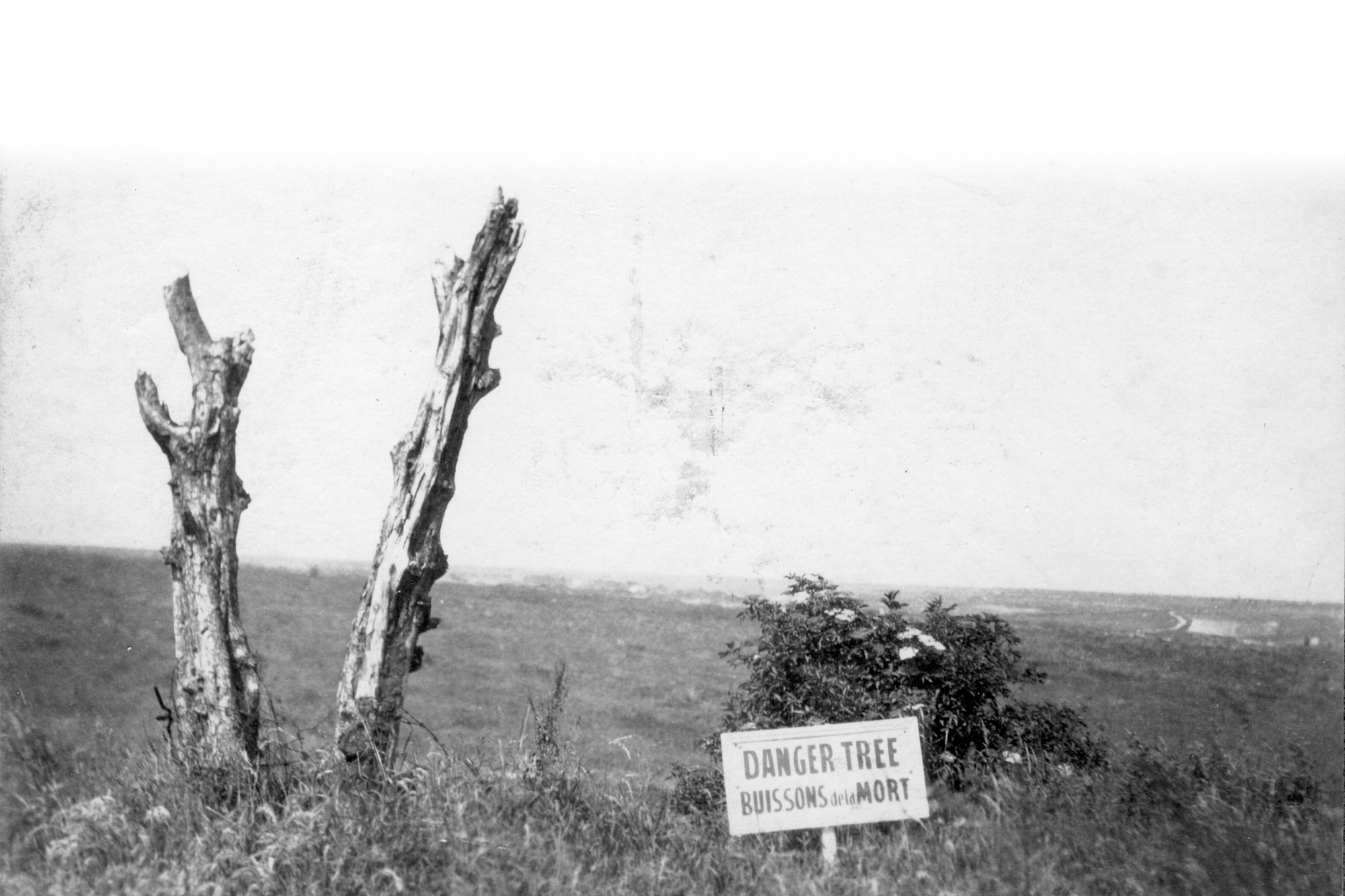Ill-fated
Trench Raiders
By Frank Gogos
A century ago, the Newfoundland
Regiment suffered staggering losses
at Beaumont-Hamel, France, at the start
of the Battle of the Somme
The Royal Newfoundland Regiment has a storied past, but of all the stories, none is as captivating or tragic as its advance during the Battle of the Somme on July 1, 1916. The 1st Newfoundland Regiment (which would attain Royal status in 1917) first arrived near the firing line on the Somme front in April 1916. This would be its home for the next two and a half months.The Regiment had been initiated into active service in the Great War when it joined Britain’s 29th Division in the barrens of Suvla Bay on the Gallipoli peninsula in the Ottoman Empire (today’s Turkey). With the exception of a small skirmish over a piece of rocky ground, the regiment’s time in Gallipoli was notable for the flies, thirst and a steady sick parade that reduced the hardy colonials to skeletal ashen ghosts of their former robust selves.Their arrival on the Somme marked what they hoped would be a welcome respite from the deprivations of their time in the trenches of Suvla Bay. And for the first two months, the routine was far more favourable in France than on the peninsula.
Their first call to action was for two trench raids in advance of the full-scale attack planned for July 1. Trench raids were well planned and rehearsed dash-and-grabs into enemy lines to gather information on enemy preparedness. Fifty-seven men were handpicked and trained for weeks in mock trenches in the art of close-quarters combat with a variety of medieval-looking homemade weapons such as knives, knuckledusters, spiked maces and knob-berries. Defenders counteracted this throwback to medieval times by dressing their sentries in chain mail and armour. The Newfoundlanders’ trench raid mission was intended to assess the strength of the German line in the Y Ravine (a natural depression in the landscape) and bring back a prisoner, if possible.
Initially, there was to be only one raid, but the first, on the night of June 26-27, failed when the raiders’ positions were exposed as they approached the German lines in front of the Y Ravine. The officer in charge of the raid, Captain Bert Butler, ordered a withdrawal. They were ordered to make another attempt the next night.
This time they reached the German parapet after the discovery of a 14-metre gap in the German wire that led to the enemy’s trenches. As the main group of men approached the German line, a flare exposed them. The enemy fired and many of the party fell wounded. A few managed to enter the trench in the ensuing melee.
Private George Phillips entered a sap and could be heard clearing a wide swath, judging by the yelling and groaning that his comrades heard coming from the German trench. Captain Butler ordered another withdrawal in the face of overwhelming odds, gathering his men near today’s Danger Tree and sending out rescue parties to recover the wounded. Phillips, however, was unable to withdraw, but found a shell hole where he continued his assault on the line with rifle fire throughout the night. The next morning, his clothes in tatters and covered in blood, he reported to the regiment.
Though they failed to take a prisoner, the raiding party reported that the week-long bombardment of the lines in this sector had little impact on German preparedness and numbers. By this time, the massive war machine was in full swing on the British side, and in the overconfidence that was the hallmark of the colossal failure on July 1, there was no thought given to abandoning the attack.
The Danger Tree was once a group of trees that stood about halfway into
No Man's Land. Troops used it as a landmark to gather at during
the Battle of the Somme.Memorial University | Thomas F. Nangle Coll-308

On the morning of July 1, officers of the Newfoundland Regiment were in the 88th Brigade headquarters when the attack was launched at 7:30 a.m. They witnessed the early carnage as soldiers who only seconds before had gone over the top began falling back into the front-line trench in unfathomable numbers. The regiment’s objective for the day was the village of Beaumont-Hamel, but by the time the Newfoundlanders went over the top an hour and forty-five minutes later, the situation was far from clear and new objectives were assigned. The objectives meant little to the men who were ordered over the top, and the Y Ravine became their focus.
At 8:45 a.m., Lieutenant-Colonel Arthur Hadow received the order to start his attack on the Germans. Initially, the 1st Newfoundland Regiment and the Essex Regiment’s 1st Battalion were to attack together, but a command from the 88th Brigade Brigadier-General D.E. Cahley to attack independently led Hadow to decide to send his men over the top from 200 metres behind the front lines.
Hadow contemplated co-ordinating with the Essex, but decided that the communication trenches clogged with bodies would lead to unnecessary delays and ordered his men to advance over the top from their reserve trenches. This order is still questioned and argued over today. At 9:15 a.m., the Essex were still moving toward the front line when Hadow raised his ash swagger stick to signal the advance. More than 800 men swarmed out of the trenches and slowly made their way toward their own front lines. Hadow found his own path to the front line.
When the Germans first spotted the Newfoundlanders, they were silhouetted against the skyline, the only battalion advancing in this sector. As the front of the advance came over the crest and into view, German machine guns began cutting down the Newfoundlanders like cordwood. Many fell before reaching their own front line. Most were cut to pieces in a crossfire of machine-gun and artillery rounds that churned up the fishbowl-like slope in no man’s land. Few, if any, Newfoundlanders fired a shot or managed to toss a bomb at the enemy during the advance.
The attack was over in minutes. At 9:45, Hadow reported to Cahley that the advance had failed. Cahley responded by ordering Hadow to gather his men in no man’s land to assist the pending advance of the 4th Battalion Worcestershire Regiment and the 1st Battalion Hampshire Regiment. As Hadow left brigade headquarters, he came across a 29th Division staff officer voicing his concern about Cahley’s order. The staff officer in turn convinced Cahley to rescind the order. The staff officer had watched as the Newfoundlanders were picked off almost to the last man.

One hundred years later, the Newfoundland Regiment’s advance near Beaumont-Hamel still resonates deeply with Newfoundlanders. Every July 1, while the rest of Canada celebrates the birth of a nation, Newfoundlanders mourn their losses in the Great War and especially those at Beaumont-Hamel. The innocence of a nation was lost; hardly a family in the rugged North Atlantic dominion was untouched by the tragedy that day, made all the more agonizing by the sheer folly of the order of advance. Of those involved in the attack, the total casualty count was 710, with nearly 300 killed, losses so staggering to Newfoundlanders that even with the passage of a century, the sting is nearly as severe now as it was then.

